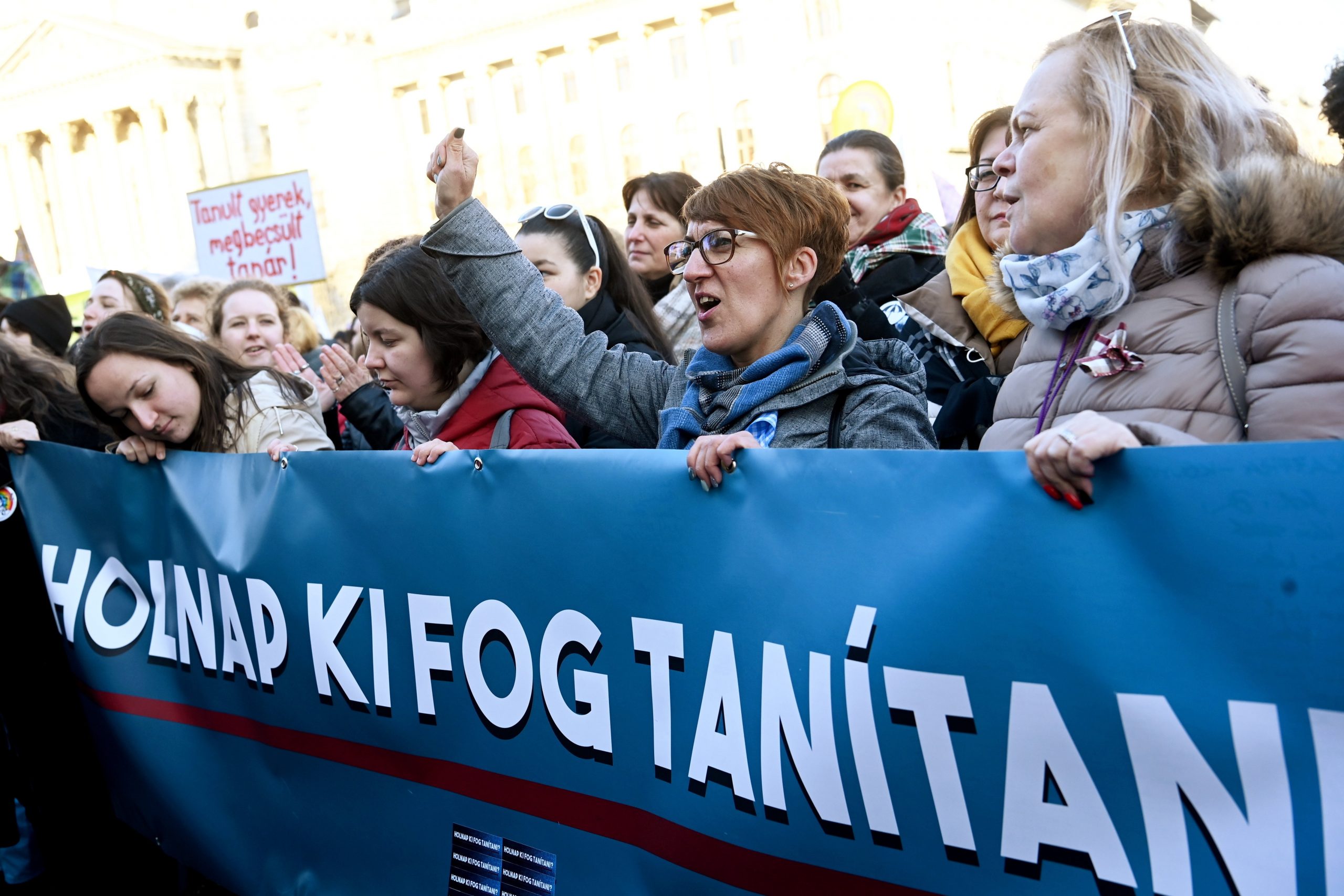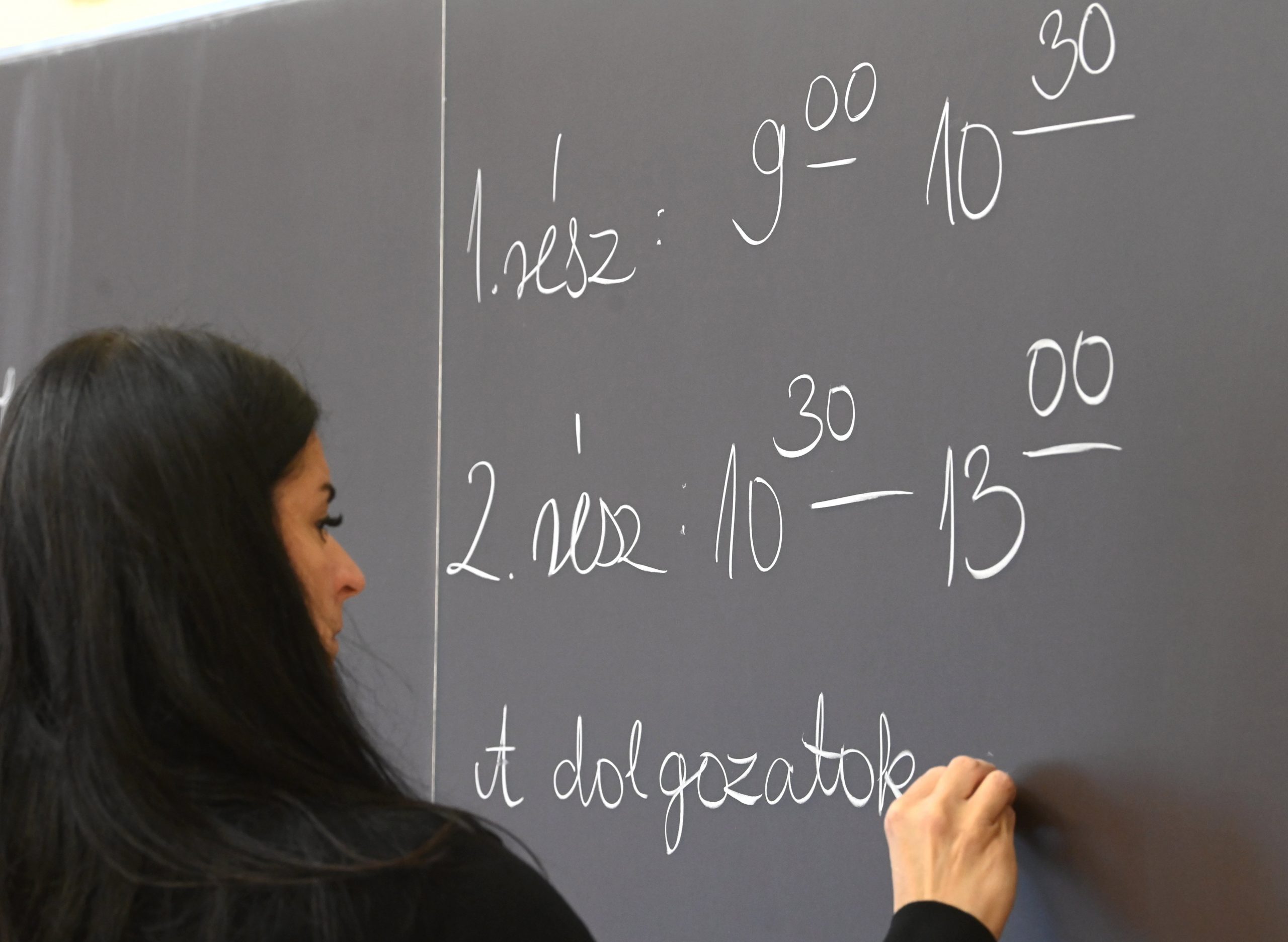
Erzsébet Nagy of teachers' union PDSZ said the public education system "fell apart long ago" but is being "held together by the professionalism of teachers".Continue reading

The number of teachers teaching subjects which they are not specifically qualified for in schools around Hungary has increased severely over the last four years, according to the Eötvös Loránd Research Network (ELKH). The University’s Institute of Economics recently published its “Indicators system of public education 2021,” which revealed some worrying information about the world of Hungarian education, Népszava reports. The issue is directly connected to the critical issue around the lack of new entries to the field, particularly because of unfair wages.
The findings indicate that while many math, physics, and chemistry teachers have gone to teachers’ college, they do not possess the specialized capabilities to teach such subjects (i.e., they did not go to university for a math or natural science degree). This is all due to the fact that there is a worrying shortage of teachers with specific university degrees in the subjects they teach.
The number of teachers without degrees in the fields they teach has grown extraordinarily since 2016. Looking at the numbers for 2020, in elementary schools, for example, 10 percent of science teachers, 9 percent of math teachers, 8 percent of foreign language teachers, and 7 percent of all teachers teaching specific fields did not have a degree in what they were teaching.
High schools are in the best situation, since in 2020 only 3-4 percent of their teachers did not have degrees in their fields, but even that number was three times greater than the 1-2 percent seen in 2010.
It is also worth noting that there is a difference in terms of location. Villages are worse off than towns and cities. While the number of teachers in villages with degrees in their fields of education was already around nine percent in 2010, that number shot up to almost 15 percent in 2019, where it remained until 2020. Its previous position was replaced by teachers in Budapest and teachers in cities, both which were below 3 percent in 2010. The most favorable situation can be seen in county towns, where there was an increase from around 1-2 percent in 2010 to just above 5 percent in 2020.
In less developed parts of the country, the situation is very bad. In elementary schools with high numbers of disadvantaged students, 25 percent of foreign language teachers, 23 percent of math teachers, and 20 percent of science teachers do not have degrees in their fields of education.
The shortage of teachers in Hungary has a number of causes. Particularly notable is the number of retirees paired with the lack of new teachers, an issue directly attributable to the extremely low starting wages of teachers. For their first few years, teachers who are new in the field need to settle for between 195 thousand (EUR 507) and 300 thousand (EUR 780) forint wages a month (before taxes and dependent in that range on their level of education). In 2022, the guaranteed wage of a second level (Pedagógus II – minimum six years of experience) teacher with a master’s degree and nine to eleven years of experience is 304,500 forints (EUR 792) a month before taxes.
That’s peanuts when considering that the average Hungarian wage, according to the Hungarian Central Statistical Office (KSH), was 492,800 (EUR 1,282) forints a month in December before taxes, while the median wage (the realistic one) was recorded at 380 thousand forints (EUR 988) a month before taxes.
The alarmingly increasing number of teachers without a degree in their field of education becomes less surprising when considering that they do not even reach the median salary in Hungary (it’s best to avoid the average salary since this number is skewed by the richest and smallest portion of the population). It is understandable that a teacher with a bachelor’s or master’s degree would prefer (and deserve) to make an above-average wage. For this reason, organizations protecting the interests of teachers are urging a 45 percent increase in salaries, which has been paired with strikes, awareness campaigns, and an open letter to Prime Minister Viktor Orbán. Thus far, the Fidesz-led government has not made any notably beneficial advancements to these actions.
The government has announced that it would not negotiate with unions until after the April 3, 2022 elections. Since then, Orbán has announced a ten percent wage increase for teachers this year, another ten percent next year, and another ten percent the year after. That just about allows them to keep up with inflation, projected to average about 9-10 percent this year, along with rising consumer prices.
Featured photo illustration by Noémi Bruzák/MTI/MTI Chief Editor’s Office